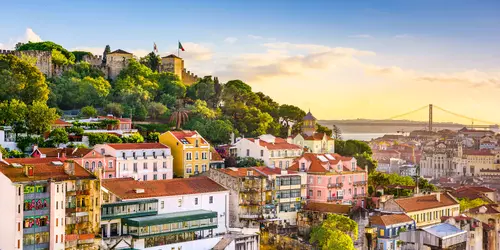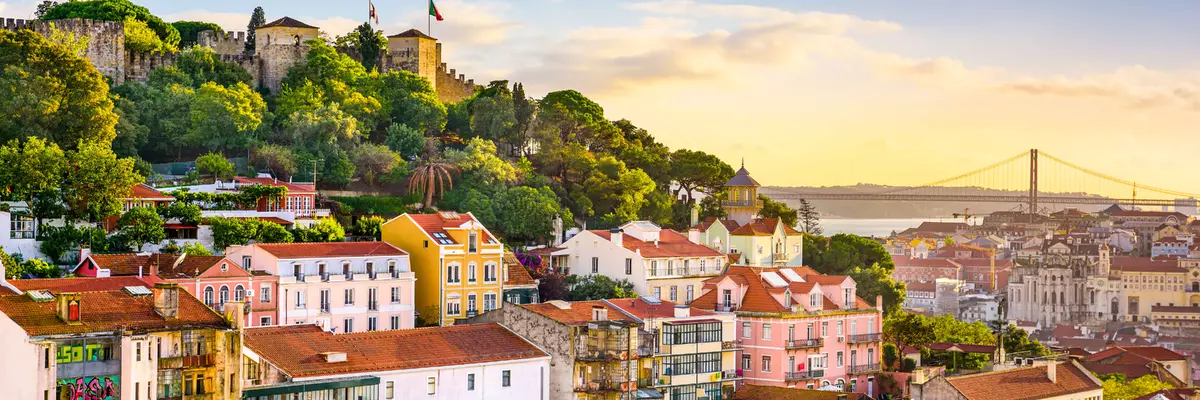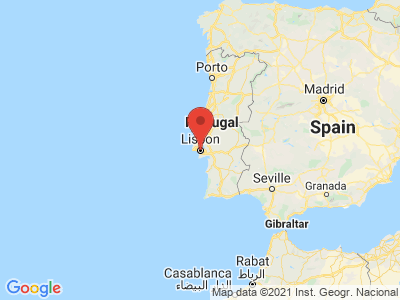Climate Table Lisbon
Jan | Feb | Mar | Apr | May | Jun | Jul | Aug | Sep | Oct | Nov | Dec | |
|---|---|---|---|---|---|---|---|---|---|---|---|---|
| Max. Temperature | 14° | 15° | 17° | 20° | 21° | 25° | 27° | 28° | 26° | 22° | 17° | 15° |
| Min. Temperature | 8° | 8° | 10° | 12° | 13° | 15° | 17° | 17° | 17° | 14° | 11° | 9° |
| Sun Hours | 5 | 6 | 6 | 9 | 10 | 11 | 12 | 11 | 9 | 8 | 6 | 5 |
| Water Temperature | 14° | 14° | 14° | 15° | 16° | 17° | 18° | 19° | 19° | 18° | 16° | 15° |
| Rain Days | 11 | 8 | 11 | 7 | 7 | 2 | 1 | 1 | 4 | 7 | 9 | 11 |
The climate year of Lisbon
Lisbon is located by the sea, but in a bay that protects it from the weather influences of the Atlantic Ocean. Since the city is located in the south Portugal and thus in the south of the Iberian Peninsula, one can already speak of a mixture of Atlantic and Mediterranean climate here. The influence of the Mediterranean climate is strong, and the region around the Portuguese capital is also very dry. Within the city area there are also climatic differences, because the relief is very mobile. Some parts of the city are quite high, while others by the sea are influenced by a light breeze. Precipitation falls mostly in the period between November and March, i.e. in winter. Overall, however, the amounts of precipitation are rather low.
General information about Lisbon
Among the main sights of Lisbon are its various monasteries and churches. Among them, the cathedral in the city center is particularly noteworthy. Behind the cathedral, the ruins of an ancient monastery have been excavated and can be visited. The Jerome Monastery in the suburb of Belem is also a tourist attraction. Here lies buried one of the most famous Portuguese, Vasco Da Gama. In the narrow streets of the Alfama district, the ancient streetcars squeeze past between the facades of the houses. Here life awakens only in the evening and in many small bars the famous Fado is played and danced. The Castelo Sao Jorge is located on a hill above Alfama. The old venerable walls contain numerous exhibitions and also the park around the castle complex as well as the view of Lisbon from here are worth seeing. Since Lisbon is located directly on the sea, a visit to one of the fish restaurants is an absolute must for visitors. The Torre de Belem is also one of the more famous buildings in Lisbon. This tower is located directly on a waterfront promenade in the Belem district.
Tourism Lisbon
Lisbon and its surroundings are influenced by both the Atlantic and Mediterranean climates. The Atlantic Ocean ensures that summers are not too hot and winters are rather mild. One reason for this is the Gulf Stream. It almost never happens that temperatures fall below freezing point during the winter months. As for precipitation, it falls mainly in the winter period from November to January, after which there are still some rainy days until March. Overall, however, the 700mm mark is not exceeded. Nevertheless, the months of December to February are often damp and cold, and tourists tend to avoid the city during this season. In summer, rain hardly ever falls. July and August are considered very dry and it is hot in the city. Every now and then the energies are discharged in a summer thunderstorm, but it passes quickly. Spring and autumn are probably the best times to visit Lisbon. In this way, one avoids the greatest heat and the cold and humid winter. From mid-March to the end of June, temperatures are pleasant and become increasingly summery. Between September and mid-November, the climate is also ideal for exploring and sightseeing.


